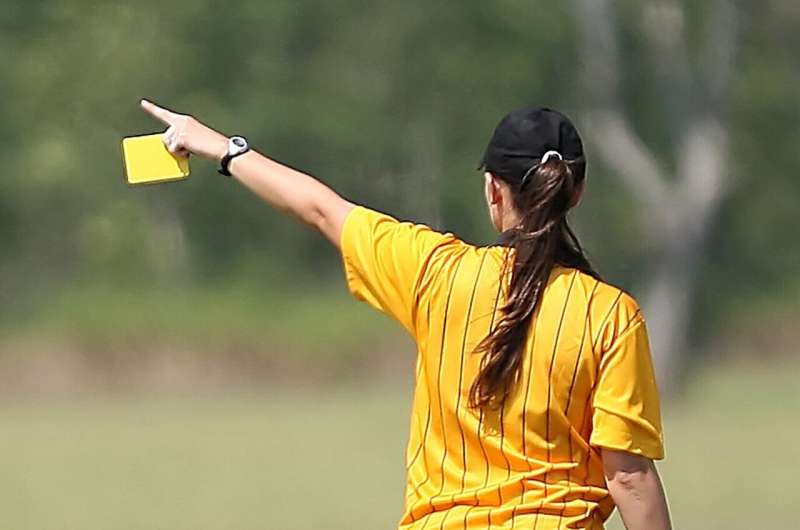This article has been reviewed according to Science X's editorial process and policies. Editors have highlighted the following attributes while ensuring the content's credibility:
fact-checked
trusted source
proofread
Report highlights trajectory challenges for women in elite football

A new report commissioned by the Fédération Internationale de Football Association (FIFA) and Fédération Internationale des Associations de Footballeurs Professionnels (FIFPRO), undertaken by Edith Cowan University (ECU), surveyed footballers across 12 countries in six confederations. More than 700 players participated in the survey, with 71.5% classifying themselves as professional, with a further 16.8% classifying themselves as semi-professional.
Less than half of the surveyed elite women players ("footballers" or "players") are making sufficient income from the sport to cover their football-related expenses. While 67% of the surveyed players currently earned a substantial portion of their total annual income from playing football, most of the respondent's incomes were sourced from a second or even third job.
Surveyed players in the US, Australia and England report earning a greater absolute income from their efforts on the field, compared with their counterparts in Brazil, the Republic of Korea, Fiji, New Zealand, or Chile, however, the context to individual country average annual income becomes critical. For example, 73.3% of the Australian respondents noted that their expenses related to football was greater than their current football income.
In Australia, 78% of the professional footballers that took part in the survey held a job in addition to playing football, with only 2% of players earning at peak, between $40,000 and $49,999 annually from the game. Australia's average annual income is currently $60,430.
"We are so proud of all the progress that has been made for women in sport. And while we should celebrate the successes, we have to remember that that progress is not occurring equally across the world," said ECU Pro-Vice-Chancellor (Sport) and Professor of Human Performance, Sophia Nimphius.
Women's football is unequally developed around the world, with the degree of professionalization, facilities, opportunities and access to the game varying from location to location, meaning the opportunity to earn an income from the game is also contingent on location.
"Some of the countries of players surveyed have vastly different gender equality index rankings, as measured by the World Economic Forum, that can influence broader conditions due to higher gender wage gaps and greater unpaid care work," said Professor Nimphius.
"It is important to acknowledge that there are demands on players beyond football, and that when these are layered upon varying provisions within football, it compounds the effect and we are losing talent and losing the opportunity to create hotbeds of not just football talent, but also for strong women, active women that could be future leaders beyond sport."
Professor Nimphius noted that football could be viewed as a microcosm of society, reflecting the work that needs to be done in order to bridge a very visible gender gap that exists within the larger society.
"The World Economic Forum predicts it will take another 132 years to for the global gender gap to close, but since sport is a microcosm, we have the opportunity to bridge this gap faster. Sport should offer an opportunity for people to express themselves, and elite sport benefits most from the largest base possible of people participating. For that to happen, people need to feel like they belong and are supported to participate.
"That is why inadequate pay is a common talking point, because it is easy to pinpoint. But it is indicative of a bigger story of gender inequality that lies underneath," said Professor Nimphius.
The report makes a number of recommendations to support women football players, including adjusting for the workload of multiple job holders and taking a two-pronged approach to football careers in relation to resourcing and management.
"We need to acknowledge that the solutions in each country will be different, but that the outcome should be the same. Which is to provide opportunities that enable any girl or woman to maximize her capabilities as a footballer, as a person, and that you do so in the context of the nation that you're in," said Professor Nimphius.
"We also need to consider the individual player holistically, considering their duties outside of football and finding a way of balancing their careers and commitments both on and off the field. What we would do here in Australia may look totally different to what we might do in Fiji, but ultimately women should be supported to have the opportunity to play their best football and to live a positive life within their community, and that includes having financial security, as well as respect and recognition and safety within their community while they're playing football."
Changes are already happening following discussions with many key stakeholders such as FIFPRO and player unions, as FIFA announced regulatory changes commencing 1 June 2024, aimed to further protect the health and well-being of women in the game.
Provided by Edith Cowan University





















